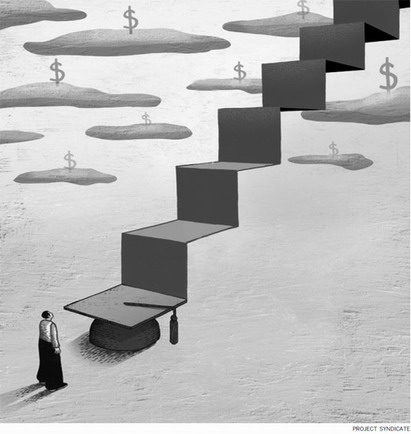

Over the last 35 years, China's strong and sustained output growth-averaging more than 9.5 percent annually-has driven the miraculous transformation of a rural, command economy into a global economic superpower. In fact, according to the World Bank's most recent calculation of the purchasing power of aggregate income, China is about to overtake the United States as the world's largest economy. But, in terms of the quality and sustainability of its growth model, China still has a long way to go.
Despite its remarkable rise, China's per capita income, at $10,057 (adjusted for purchasing power) in 2011, ranks 99th in the world-roughly one-fifth of US per capita income of $49,782. And reaching high-income status is no easy feat. Indeed, many countries have tried and failed, leaving them in a so-called middle-income trap, in which per capita income levels stagnate before they can cross the high-income threshold.
Strong human capital is critical to enable China to escape this fate. But China's labor force currently lacks the skills needed to support high-tech, high-value industries. Changing this will require comprehensive education reform that expands and improves opportunities for children, while strengthening skills training for adults.
To be sure, over the last four decades, the quality of China's labor force has improved substantially, which is reflected in impressive gains in educational attainment. Gross enrollment rates at the primary level have surpassed 100 percent since the 1990s, while secondary and tertiary enrollment rates reached 87 percent and 24 percent, respectively, in 2012. In 2010, more than 7 percent of Chinese citizens aged 15-64 had received secondary education, compared to about 20 percent in 1970.
Furthermore, Chinese students perform well in internationally comparable tests. Fifteen-year-olds in Shanghai outperformed students from 65 countries, including 34 OECD countries, in mathematics, science, and reading, according to the Program for International Student Assessment in 2009 and 2012.
China has also benefited from rapid employment growth, with more than seven million workers having entered the workforce each year since 1990. This, together with the massive reallocation of workers from rural to urban areas, has supported the labor-intensive manufacturing industries that have fueled China's economic rise.
But China's demographic advantage is diminishing quickly, owing to low fertility rates and population aging. According to the United Nations, by 2030, China's working-age population (15-59 years old) will have decreased by 67 million from its 2010 level.








